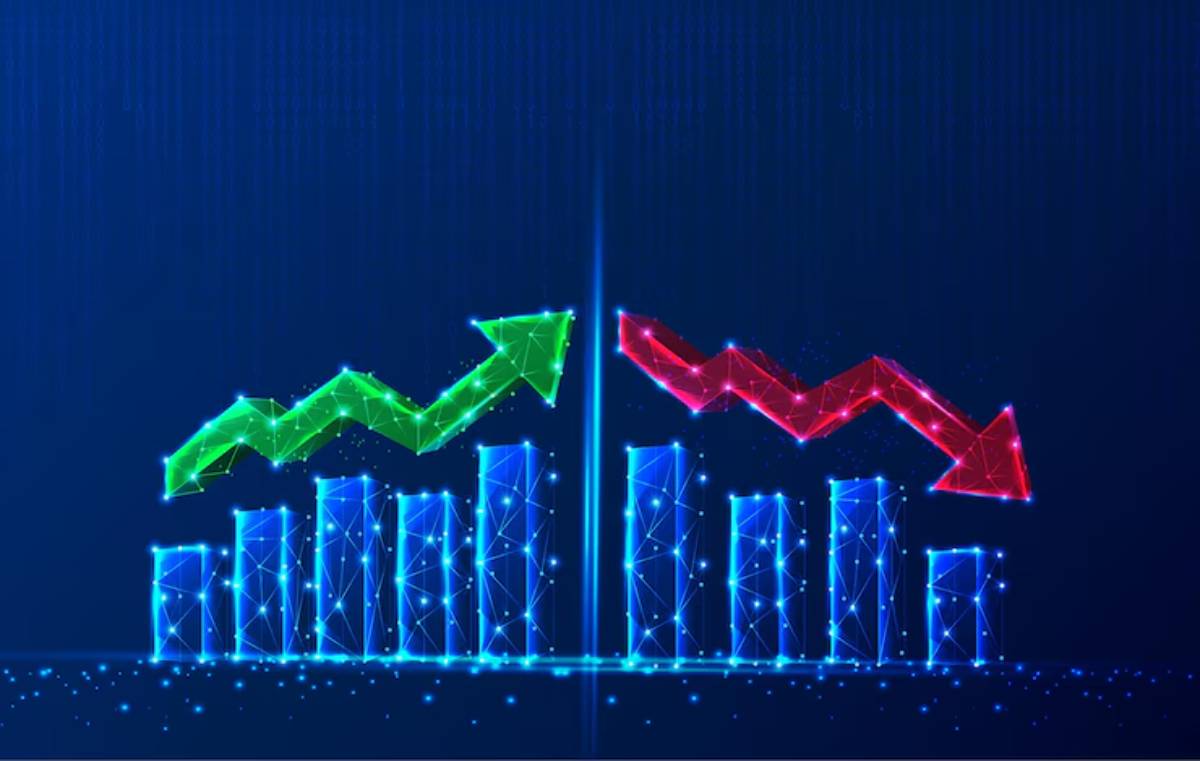
Volatility Comparison: Which is More Stable?
Imagine standing on a wobbly bridge during a storm — not the most comforting place to be, right? The same applies to your investments. When the markets get rough, you want a foundation that feels sturdy.
When choosing between index funds and ETFs, it’s important to know their volatility and stability. After all, building wealth isn’t just about chasing returns — it’s about managing risk along the way.
This guide shows how index funds and ETFs differ in volatility. We’ll give you real-world insights on risk assessment. This way, you can choose the right option for your investing journey with confidence.
What Is Investment Volatility?
Simple Definition
Volatility refers to how much and how quickly an investment’s value fluctuates over time. More ups and downs mean higher volatility — and generally, higher perceived risk.
Why Volatility Matters
- It affects how calmly you can stick to your investment plan.
- It determines how big your short-term losses (or gains) might be.
- It can influence the returns you actually experience, especially if emotions cause you to buy or sell at the wrong times.
Quick Analogy: Think of volatility like turbulence on a flight. Some trips are smooth; others are a bit bumpy. It’s easier to reach your destination if you’re prepared for the ride.
Volatility: Index Funds vs. ETFs
1. Underlying Assets Drive Volatility
At the core, index funds and ETFs that track the same index have similar levels of volatility.
Example:
- An ETF and an index fund tracking the S&P 500 will both mirror the market’s ups and downs.
Key Insight: The type of investments held, not the fund structure, mainly dictates volatility.
2. Trading Differences Can Amplify Feelings of Volatility
- ETFs trade intra-day, meaning prices change constantly during market hours.
- Index funds are priced once daily, based on the closing market value.
Impact: If you’re watching an ETF’s price during the day, it can feel more volatile because you see every little move.
Real-World Tip: If you often make emotional decisions, try index funds. They can help you avoid reacting to short-term swings.
3. Liquidity and Spread Risks
With ETFs, volatility can also be influenced by:
- Bid-ask spreads: Wider spreads mean more cost and potential price variation.
- Market conditions: In times of crisis, ETF prices can diverge slightly from their underlying net asset value (NAV).
Index funds don’t experience these intraday spreads, offering a more “settled” pricing experience.
Risk Assessment Factors to Consider
1. Fund Size and Liquidity

- Large, popular ETFs like iShares Core S&P 500 or Vanguard FTSE All-World are highly liquid and very stable.
- Small, niche ETFs might see larger price swings due to lower trading volume.
2. Market Segment Tracked
The underlying index dramatically impacts volatility:
- Global or large–cap indices (e.g., MSCI World, S&P 500) = Generally lower volatility.
- Emerging markets or thematic ETFs (e.g., clean energy, biotech) = Higher volatility.
Quick Tip: Stick to broad, diversified indices for smoother rides.
3. Trading Behaviour
- Frequent trading of ETFs during volatile markets can magnify losses.
- Index fund investors, by contrast, are often “forced” into a slower pace, which may protect against bad decisions.
4. Tracking Error
- Tracking error measures how closely a fund follows its index.
- Larger tracking errors can create additional volatility independent of the market.
Low-cost index funds and major ETFs typically show very low tracking errors.
Real-World Comparisons: Case Studies
Global Equity Example

Fund Type 10-Year Volatility (%) Vanguard FTSE Global All Cap Index Fund ~14% Vanguard FTSE All-World ETF ETF ~14%
Conclusion: Volatility levels are almost identical when tracking similar global baskets.
Emerging Markets Example
Fund Type 10-Year Volatility (%) Fidelity Emerging Markets Fund Index Fund ~20% iShares MSCI Emerging Markets ETF ETF ~20%
Takeaway: Emerging markets are inherently more volatile, regardless of whether you choose an ETF or an index fund.
Emotional Stability: An Overlooked Aspect
How Different Structures Influence Behaviour
- ETFs’ real-time pricing can tempt you to act rashly, especially in downturns.
- Index funds’ once-a-day pricing encourages a “buy and hold” mindset.
Personal Story: During the COVID-19 crash in March 2020, investors glued to ETF tickers panicked and sold at market bottoms. Those in index funds, less exposed to minute-by-minute moves, were more likely to stay put — and benefited when markets rebounded.
Key Insight: Sometimes, stability is as much about emotional discipline as market data.
Practical Tips to Manage Volatility
1. Diversify Broadly
Invest across geographies and sectors to smooth out the rough patches.
2. Use Limit Orders for ETFs
When buying ETFs, use limit orders to control the price you pay, especially during volatile sessions.
3. Automate Investments
Set up regular, automatic contributions to index funds. This builds consistency and reduces the temptation to time the market.
4. Focus on the Long Term
Short-term volatility is inevitable. Wealth is built by staying the course over decades, not days.
5. Review, Don’t React
Check your portfolio once or twice a year — not daily — unless you genuinely need to rebalance.
Stability Comes in Many Forms
When it comes to investment volatility, index funds and ETFs tracking the same benchmarks show very similar levels of actual risk. The real difference lies in how you experience that volatility.
If you crave peace of mind and don’t want to be tempted by day-to-day movements, an index fund might be your ideal companion. If you want flexibility and can manage stress, ETFs are a great, budget-friendly choice.
Ultimately, the most stable investment is the one you stick with.
Ready to build a portfolio that matches your risk tolerance and financial dreams?
Start today by choosing the investment vehicle — index fund or ETF — that fits your personality, goals, and investing journey!
Enjoyed this guide? Share it with another investor, comment on your investing style, or subscribe for easy, clear finance tips!